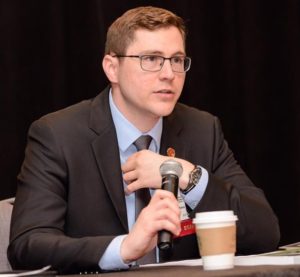Doubly Disadvantaged: Rural Communities Left Out In Federal Income Limits Formula
 Many federally-funded housing and community development programs target their efforts based on the incomes of the people seeking assistance. Applicants are deemed either eligible, or ineligible, based on how their income compares to their neighbors. For those engaged in ensuring that limited federal resources do the most good, the ability to split up a population into groups allows the limited funding to be targeted to those most in need.
Many federally-funded housing and community development programs target their efforts based on the incomes of the people seeking assistance. Applicants are deemed either eligible, or ineligible, based on how their income compares to their neighbors. For those engaged in ensuring that limited federal resources do the most good, the ability to split up a population into groups allows the limited funding to be targeted to those most in need.
But, what if the way that need is calculated is fundamentally flawed? In the case of some impoverished rural areas, families fail to qualify for assistance from the very programs designed to help them keep a roof over their heads and work toward a better future. This eligibility issue will be especially important as the federal government rolls out its pandemic relief program for families that owe back-rent and utility bills, most of which are based on the metrics we discuss here.
To determine who is eligible for assistance, a median income is calculated for a certain location. For a specific area, usually a county (but in large urban places a “Metropolitan Statistical Area” or “MSA”), this average income is known as that place’s Median Family Income, or MFI. From that median, fractional income limits are set, against which families are compared. A low-income family is defined as one making less than 80% of the MFI, very low income is less than 50%, and extremely low income is less than 30%. Because income limit definitions are fractions of the MFI, if the calculation for the MFI is wrong, the income limits will be as well.
A typical MSA contains people with high incomes and people living below the poverty line. In urban areas, MFIs are significantly higher than in those counties that are predominantly rural in character, where wages have historically been lower and where the recovery from the 2008 Recession has lagged. This pattern of lower MFIs is reinforced if we look at rural counties that meet the definition of “persistent poverty counties” – those that have seen more than 20% of their population living in poverty over the last 30 years. High concentrations of poverty in a place exerts a dampening influence on that place’s MFI. This phenomenon is limited to nonmetropolitan counties, not urban MSAs.
One can trace the pattern to its root cause: the way Congress has designed the calculations of MFIs for nonmetropolitan counties. Seeking to prevent a poor county from having unreasonably lower MFIs, Congress instituted a “check” in the calculations that made sure one county would not suffer compared to its neighbors. This check meant that a county could not have a lower MFI than a state average MFI.
The system is working as intended in many states where there are a wide variety of incomes and functioning economies outside of their cities. Where it breaks down however, is in states that have concentrations of rural poverty. In regions like Appalachia (e.g. Kentucky, West Virginia), the Mississippi Delta (e.g. Mississippi, Louisiana), and along the southern border (e.g. New Mexico, Arizona) concentrations of rural poverty artificially lower MFI calculations statewide. Research from Poverty Solutions at the University of Michigan finds these regions are among the most disadvantaged in the country, when using the Index of Deep Disadvantage to measure multiple dimensions of disadvantage.
With lower MFI’s, come lower thresholds for which families qualify as low-income. This has a very real impact on which families can receive assistance with housing and a variety of other services. Many families in these counties are unable to make ends meet but fail to qualify as low-income.
In fact, when examining the problem on a national scale, it becomes clear that this is a systemic issue. In urban places, 30.4% of the population qualifies as low income, but only 16.3% of the population of rural places are likewise qualified.
In the recent American Rescue Plan Act, Congress took a small step forward in recognition of this disparity. That legislation created the Homeowners Assistance Fund, designed to prevent foreclosures, and the Emergency Rental Assistance program, designed to prevent evictions of renters. However, the eligibility for these two programs differs by income level. Congress made it possible for the Homeowners Assistance Fund to use the median income of the United States for eligibility purposes, which indicates that policymakers recognized the issue inherent in the MFI system. Unfortunately, Congress did not include such a provision for the Emergency Rental Assistance, nor did they address the wider issue with pre-existing federal investments.
Concentrated rural poverty is skewing the calculations at the foundation of the way we distribute federal assistance to low-income families and communities. People affected by this are doubly disadvantaged by living in a poor county and a poor state. It should be noted that the rural areas most heavily impacted by this disparity contain some of the highest percentages of minority populations.
Where you live should not determine what government services you are able to access. Nor, in a prosperous nation such as ours, should any family be forced to choose between paying for housing, food, or medical care. We can live in a country where we make it possible for everyone to prosper. Solving this accidental disparity would be a small first step.
| Washington DC
(MSA) |
Randolph Co. WV
(Rural) |
Perry Co. KY
(Rural, Persistent Poverty) |
|
| MFI for community | $121,300 | $54,900 | $45,400 |
| “Low Income” | $77,600 | $43,900 | $40,950 |
| “Very low income” | $60,650 | $27,450 | $25,600 |
| “Extremely low income” | $36,400 | $25,750 | $25,600 |
The table shows a comparison of example MFIs in 2020 for different types of communities, with Income Limits. All numbers are for a family of four.
Joshua Stewart is senior advocacy manager at Fahe, a network of more than 50 local leaders building the American dream in Appalachia and working together to ensure no community is left behind. H. Luke Shaefer is the Hermann and Amalie Kohn Professor of Social Justice and Social Policy at the University of Michigan and the director of Poverty Solutions, an action-based university-wide initiative that partners with policymakers and community organizations to find new ways to prevent and alleviate poverty.
